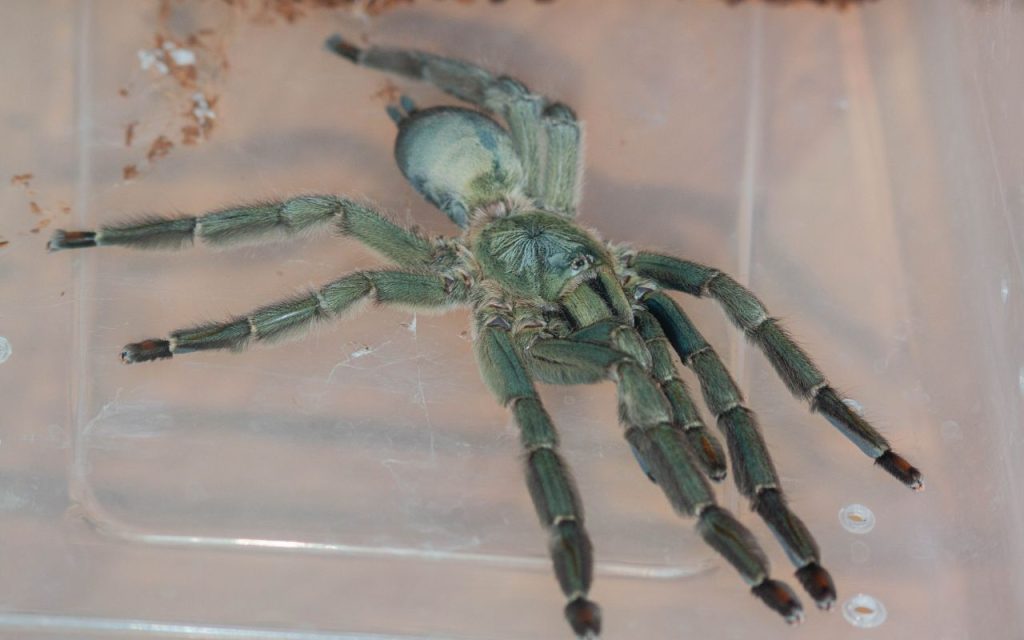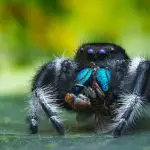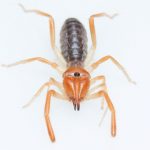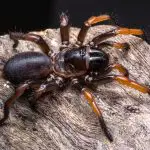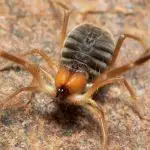The Trinidad Chevron Tarantula (Psalmopoeus cambridgei) is a medium-sized species of tarantula that is native to the island of Trinidad. These spiders are known for their distinctive black and white chevron pattern on their abdomens, as well as their active and somewhat aggressive behavior.
Housing and Environment
When it comes to housing Trinidad Chevron Tarantulas, a terrarium that is at least 10 gallons in size is recommended. These spiders require ample space to move around and build their webs. They also like to climb, so an arboreal enclosure is what I would go for.
The enclosure should be secure and escape-proof, as these tarantulas are skilled climbers and can easily escape from a poorly secured enclosure.
The ideal temperature range for Trinidad Chevron Tarantulas is between 75-85°F (24-29°C), with a humidity level of around 70%. The substrate in the enclosure should be moist but not soaking wet, and should be at least 2-3 inches deep to allow for burrowing.
Feeding
Trinidad Chevron Tarantulas are carnivores and primarily eat insects such as crickets and roaches. It is important to only feed them live prey that is smaller than the spider itself, as larger prey can potentially harm or kill the spider.
Adult tarantulas should be fed once every 1-2 weeks, while juvenile tarantulas should be fed more frequently (2-3 times per week) to support their growth and development.
In my experience, their preferred food items are:
- crickets
- locusts
- dubia roaches
Other acceptable food items – that they may or may not be interested in – include:
- superworms
- hornworms
- pinkie mice
- mealworms
Handling
Trinidad Chevron Tarantulas are not considered to be a good species for handling, as they are known to have a highly variable disposition. Some are calm, whilst others are very defensive.
While they are not dangerously venomous to humans, they can bite if they feel threatened or scared. If you do need to handle your tarantula, it is recommended to use a soft paintbrush or similar tool to gently guide them into a transport container.
My first Trinidad Chevron Tarantula was probably the most aggressive spider I’ve ever owned. It used to raise its legs and fling itself itself at me whenever I opened its tank.
According to some keepers though, they often encounter individuals that are more laid-back, like the one in the video above. The problem is that you never know what personality you’re going to get! I’ve seen both very docile and highly aggressive individuals.
My advice is to consider this species to be a display animal only. If you really want a docile spider, go for a Pink Toe Tarantula, or perhaps a Brazilian Black Tarantula.
Potential Health Issues
Like all tarantulas, Trinidad Chevron Tarantulas are susceptible to a variety of health issues if not properly cared for. Some potential health concerns include dehydration, mites or other parasites, and injuries caused by falls or other accidents.
To prevent these health issues, it is important to maintain a clean and appropriate environment for your tarantula, and to provide them with plenty of fresh water and a balanced diet.
Breeding
Breeding Trinidad Chevron Tarantulas can be challenging, as they require specific environmental conditions and can be somewhat picky about their mates. If you are interested in breeding tarantulas, it is recommended to do extensive research and consult with experienced breeders before attempting to breed your own spiders.
In general, female Trinidad Chevron Tarantulas should be at least 2-3 years old and in good health before attempting to breed them. Males should be introduced to the female’s enclosure for breeding purposes, and then removed once mating has occurred to prevent injury or death to either spider.
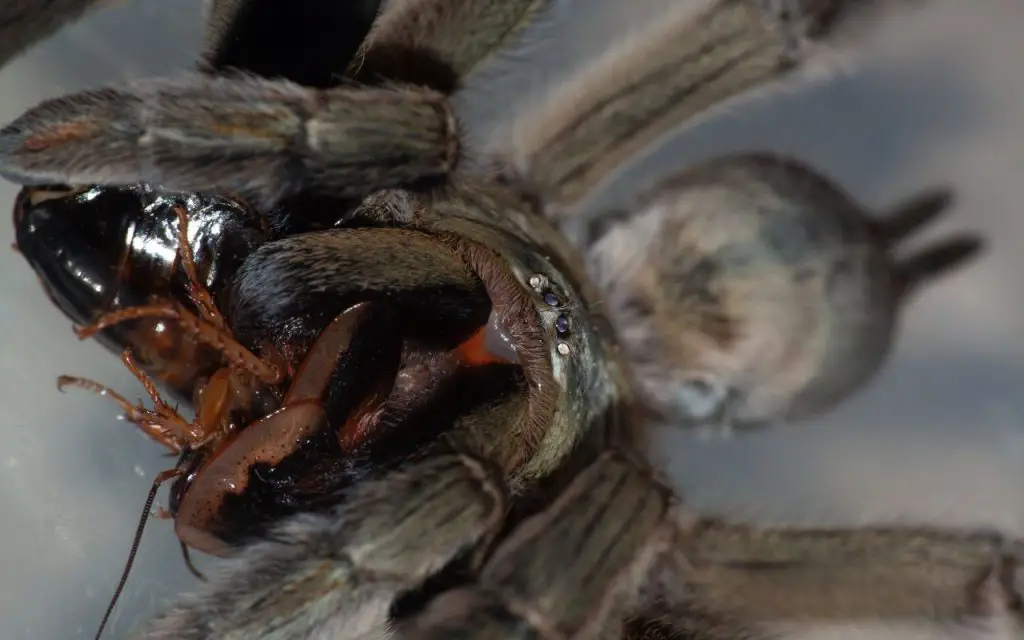
Final Thoughts
In conclusion, the Trinidad Chevron Tarantula is a fascinating and unique species that requires specialized care and attention. By providing your tarantula with an appropriate environment, a balanced diet, and avoiding handling whenever possible, you can help ensure that they live a healthy and happy life in captivity.
Why I like this species:
- The Trinidad Chevron is a big, robust spider that’s impressive to look at
- In my experience, they are quite active and can make good display animals
- They are eager feeders, and feeding them with tongs or tweezers is pretty exciting (if a little frightening)
- They construct very cool-looking tube webs around their favorite hiding places
Things to consider before buying one:
- Adult females get big – sometimes over 7 inches in legspan (18cm)
- they need an arboreal enclosure to thrive
- they need a larger enclosure than many other tarantulas due to how large and active they are
- Some of mine have been highly aggressive: handling is not recommended unless you are a very experienced keeper.
FAQ about the Trinidad Chevron Tarantula:
Is Trinidad Chevron tarantula New World or Old World?
The Trinidad Chevron Tarantula is classified as a New World tarantula. This means that it is native to the Americas, specifically the island of Trinidad. New World tarantulas are known for their distinctive urticating hairs, which they use for defense by kicking them off their abdomens when threatened. These hairs are usually a key way to determine between Old and New World species – but are almost completely absent in the Trinidad Chevron. So, the Trinidad Chevron is New World but looks a lot like an Old World species at first glance.
How big can a Chevron tarantula get?
Trinidad Chevron Tarantulas are considered to be a large tarantula, with adult females reaching sizes of around 6-7 inches (15-18 cm) in leg span. Males are typically smaller, with leg spans of around 5 inches (12.7 cm). However, it is important to note that tarantula size can vary greatly depending on factors such as genetics, diet, and environment. Some individuals may be larger or smaller than average, and it is not uncommon for males to be significantly smaller than females. Additionally, juvenile tarantulas will be smaller than adults, and may require more frequent feedings to support their growth and development.

